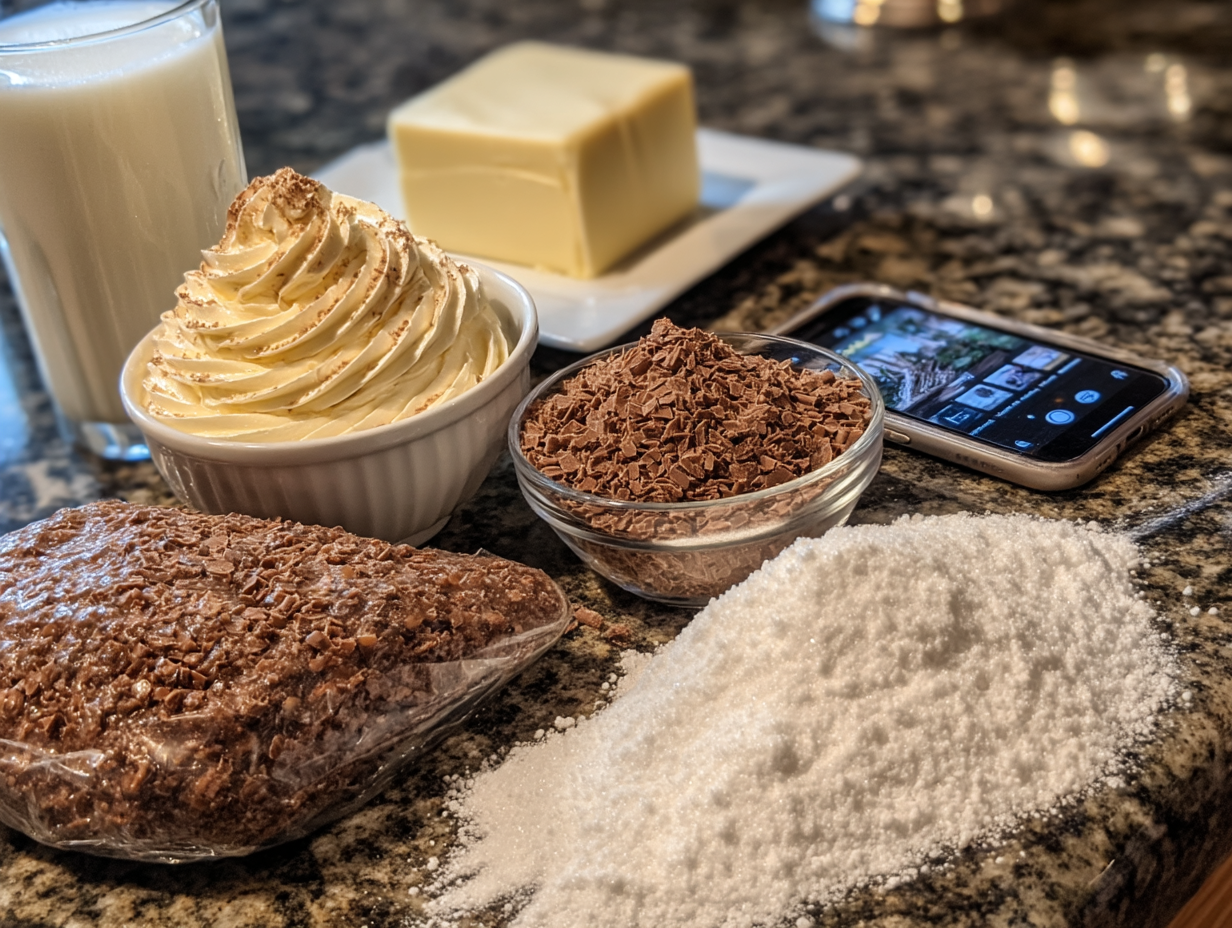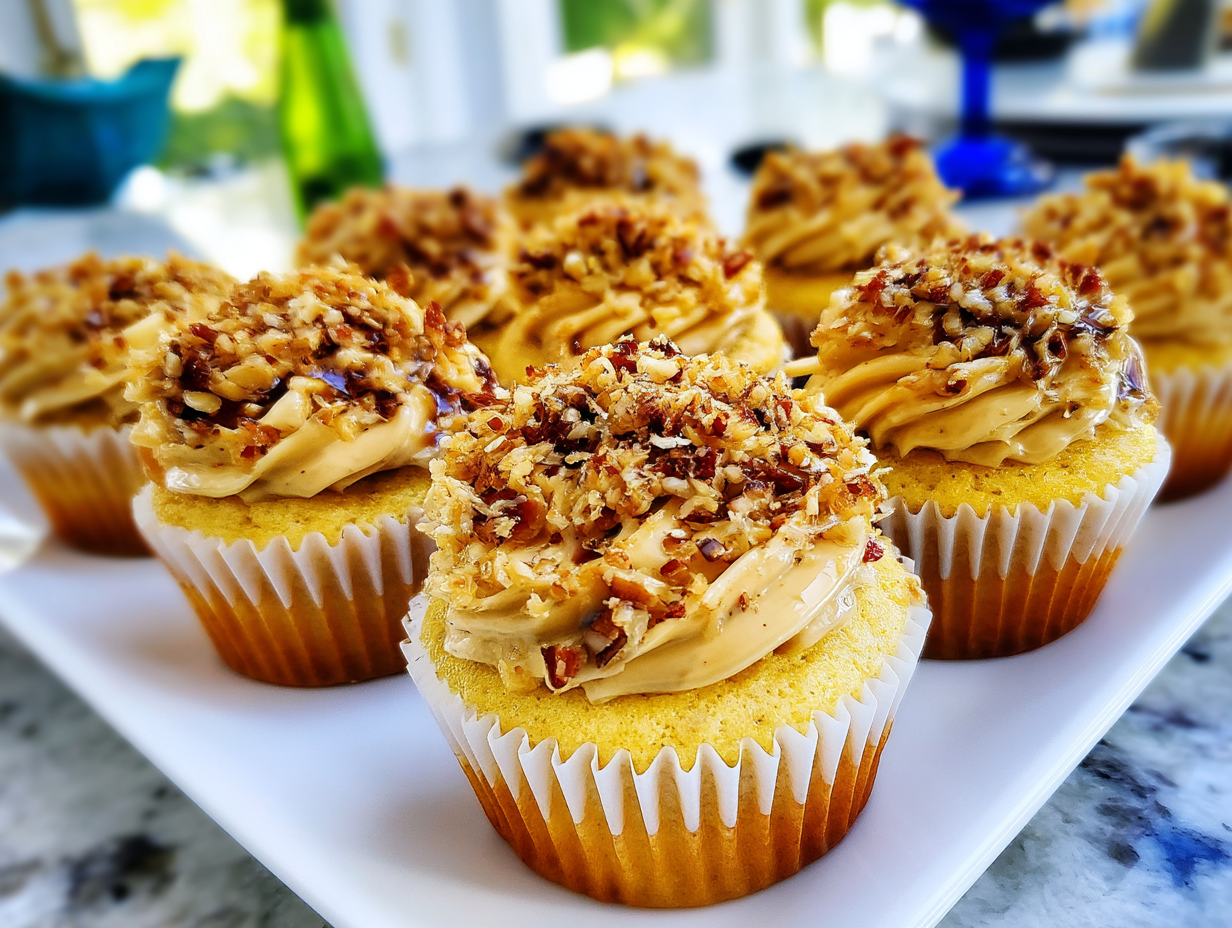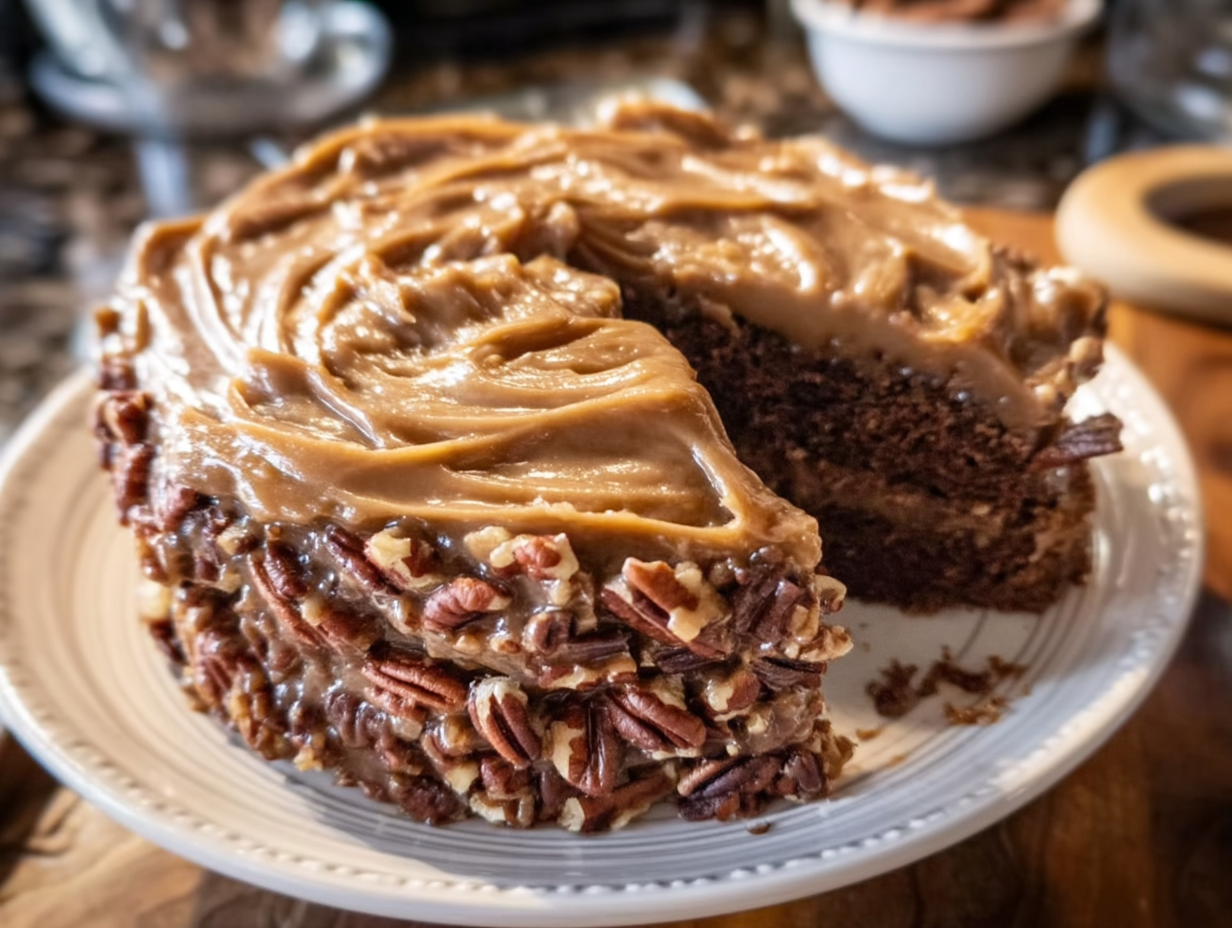German chocolate cake frosting is a timeless favorite, known for its decadent blend of caramel, coconut, and pecans. It’s the crowning glory of the beloved German chocolate cake, but its versatility extends far beyond this classic dessert. In this guide, you’ll discover everything you need to know about this frosting—from its origins to tips, tricks, and creative variations. Whether you’re a seasoned baker or just starting your culinary journey, this article has you covered. Let’s dive in!
Table of Contents
What is German Chocolate Cake Frosting?
German chocolate cake frosting is a rich and luscious topping that perfectly complements the layers of a moist, mildly sweet chocolate cake. Its unique combination of ingredients and texture sets it apart from traditional frostings. Let’s explore what makes it so special.
The Origins of German Chocolate Cake Frosting
Despite its name, German chocolate cake and its frosting don’t hail from Germany. Instead, the dessert is an American creation, credited to Samuel German, who developed a type of dark baking chocolate for Baker’s Chocolate Company in 1852. This chocolate inspired the creation of the now-famous cake and its signature frosting.
Key Ingredients: A Blend of Coconut, Pecans, and Caramel
What truly defines German chocolate cake frosting is its standout ingredients. The frosting combines:
- Shredded coconut for a chewy texture and a sweet, tropical flavor.
- Chopped pecans to add a nutty crunch.
- Caramel-like custard, made with evaporated milk, egg yolks, sugar, and butter, tying everything together in a silky, indulgent mixture.
These ingredients work in harmony to create a frosting that’s sweet, nutty, and slightly gooey, making it an irresistible topping for any dessert.
What Makes This Frosting Unique?
Unlike traditional buttercream or whipped cream frostings, German chocolate cake frosting is cooked. The process involves gently heating the custard base until thickened, which melds the flavors beautifully. The addition of coconut and pecans adds a delightful texture, creating a frosting that’s as distinctive as it is delicious.
How to Make German Chocolate Cake Frosting from Scratch
Homemade German chocolate cake frosting is simpler than it might seem. With a handful of pantry staples, you can whip up a frosting that tastes far better than anything store-bought. Here’s everything you need to know to make this decadent treat from scratch.
Essential Ingredients You’ll Need

To create authentic German chocolate cake frosting, gather the following:
- Evaporated milk: The base for a creamy, custard-like texture.
- Granulated sugar: Adds just the right amount of sweetness.
- Unsalted butter: Provides richness and flavor.
- Egg yolks: Essential for thickening the mixture.
- Vanilla extract: Enhances the overall taste.
- Shredded sweetened coconut: Adds chewiness and a hint of tropical flavor.
- Chopped pecans: For a satisfying crunch.
Step-by-Step Recipe Instructions
- Prepare the base: In a medium saucepan, combine evaporated milk, sugar, butter, and egg yolks.
- Cook gently: Heat over medium heat, stirring constantly, until the mixture thickens. This usually takes about 10–12 minutes.
- Add flavor and texture: Remove from heat and stir in vanilla, coconut, and pecans.
- Cool and thicken: Let the frosting cool to room temperature, allowing it to set into a spreadable consistency.
Tips for Achieving the Perfect Consistency
- Avoid overheating: Cooking the mixture too long can result in curdled eggs. Keep stirring, and don’t let it boil!
- Let it cool completely: The frosting thickens as it cools, so resist the urge to spread it while warm.
Common Issues and Solutions When Making German Chocolate Cake Frosting
Even the most experienced bakers can run into trouble with German chocolate cake frosting. But fear not—these solutions will help you fix any hiccups.
Why is My Frosting Runny? Causes and Fixes
A runny frosting is usually caused by undercooking. The custard base needs enough time to thicken. If your frosting hasn’t set:
- Return it to the stove and cook for an additional 2–3 minutes, stirring constantly.
- If time permits, refrigerate the frosting—it may thicken as it cools.
How to Prevent Overly Sweet Frosting
While German chocolate cake frosting is meant to be sweet, too much sugar can overwhelm its flavor. Reduce sweetness by:
- Using unsweetened coconut instead of sweetened.
- Opting for dark chocolate in the cake to balance the frosting’s sweetness.
What to Do If the Frosting Doesn’t Set Properly
If your frosting is too thick or gritty:
- Check that the sugar dissolved completely during cooking. Undissolved sugar can crystallize.
- Add a splash of warm milk to loosen it slightly before spreading.
Creative Variations of German Chocolate Cake Frosting
While the classic German chocolate cake frosting recipe is timeless, there’s plenty of room for experimentation. With a few simple tweaks, you can tailor the frosting to suit different tastes and occasions.
Adding a Twist with Dark Chocolate
For those who love a richer, less sweet topping, consider incorporating dark chocolate:
- How to do it: Melt 1/4 cup of dark chocolate and mix it into the custard base before adding the coconut and pecans.
- Why it works: The bitterness of dark chocolate balances the frosting’s natural sweetness, creating a sophisticated flavor profile.
Using Alternative Nuts for a Different Flavor Profile
Pecans are classic, but don’t be afraid to branch out:
- Walnuts add a slightly earthier taste and crunch.
- Almonds pair beautifully with coconut for a lighter, nuttier flavor.
- Macadamia nuts bring a creamy, tropical vibe to your frosting.
Dairy-Free or Vegan Substitutions
Want to make your frosting more inclusive? Try these swaps:
- Use coconut cream instead of evaporated milk.
- Replace butter with vegan margarine or coconut oil.
- Substitute egg yolks with cornstarch or a flaxseed mixture to thicken the custard base.
Experimenting with these variations allows you to adapt German chocolate cake frosting to different diets and preferences without losing its signature charm.
Pairing German Chocolate Cake Frosting with Other Desserts
Although German chocolate cake frosting is iconic, it’s a versatile topping that complements a variety of treats. Let’s explore some creative ways to use it beyond the traditional cake.
Cupcakes and Bars: The Perfect Match

Small and handheld desserts are a wonderful canvas for this frosting:
- Spread it over chocolate or vanilla cupcakes for a delightful twist.
- Use it as a topping for fudgy brownies or cookie bars to add texture and richness.
Layer Cakes Beyond the Traditional German Chocolate Cake
This frosting works with more than just chocolate cake:
- Pair it with a yellow sponge cake for a sunny, nutty treat.
- Add it to red velvet cake for an unexpected burst of coconut and pecan flavor.
Unexpected Combinations: From Brownies to Ice Cream Toppings
Think outside the box when using this frosting:
- Spoon it over scoops of vanilla or chocolate ice cream for an indulgent sundae topping.
- Swirl it into your favorite cheesecake recipe for added texture and sweetness.
By pairing German chocolate cake frosting with diverse desserts, you can elevate any treat into something truly extraordinary.
FAQ Section
How to Make Store-Bought German Chocolate Frosting Better?
Store-bought frosting can sometimes lack the homemade touch. To enhance it:
Add texture: Stir in shredded coconut or chopped pecans to replicate the traditional feel.
Boost the flavor: Mix in a splash of vanilla extract or a pinch of sea salt.
Upgrade the sweetness: Swirl in a tablespoon of caramel or melted dark chocolate for added depth.
Why is My German Chocolate Cake Frosting Runny?
Runny frosting is a common issue and usually happens when the custard isn’t cooked long enough. To fix it:
Cook longer: Return the frosting to the stovetop and heat it for 2–3 more minutes, stirring constantly.
Cool it down: As the frosting cools, it thickens naturally, so give it time.
What Kind of Icing Goes Well with Chocolate Cake?
While German chocolate cake frosting is a classic choice, other frostings pair wonderfully with chocolate cake:
Buttercream frosting: A smooth, creamy option with endless flavor possibilities.
Ganache: For a glossy, luxurious finish, nothing beats ganache.
Whipped cream frosting: Light and fluffy, perfect for balancing a rich cake.
What Are the Two Main Differences Between Chocolate Cake and German Chocolate Cake?
Though similar, these cakes have distinct features:
The chocolate base: German chocolate cake uses a sweeter, milder baking chocolate, while traditional chocolate cake is often richer.
The frosting: German chocolate cake is topped with a unique coconut-pecan frosting, unlike standard buttercream or ganache.
Conclusion
German chocolate cake frosting is more than just a topping—it’s a celebration of flavor and texture. With its rich, custard-like base, chewy coconut, and crunchy pecans, it’s no wonder this frosting has become a classic. From mastering the basic recipe to exploring creative variations and pairing it with new desserts, there’s so much to love about this iconic treat.
So, the next time you’re baking, why not try your hand at making homemade German chocolate cake frosting? Whether it’s for the traditional cake or a new dessert experiment, you’re guaranteed to impress with its one-of-a-kind charm.
For more tips, tricks, and recipes, consider exploring other decadent desserts on Recipe with Mary, like their Mocha Cake Guide. Happy baking!

